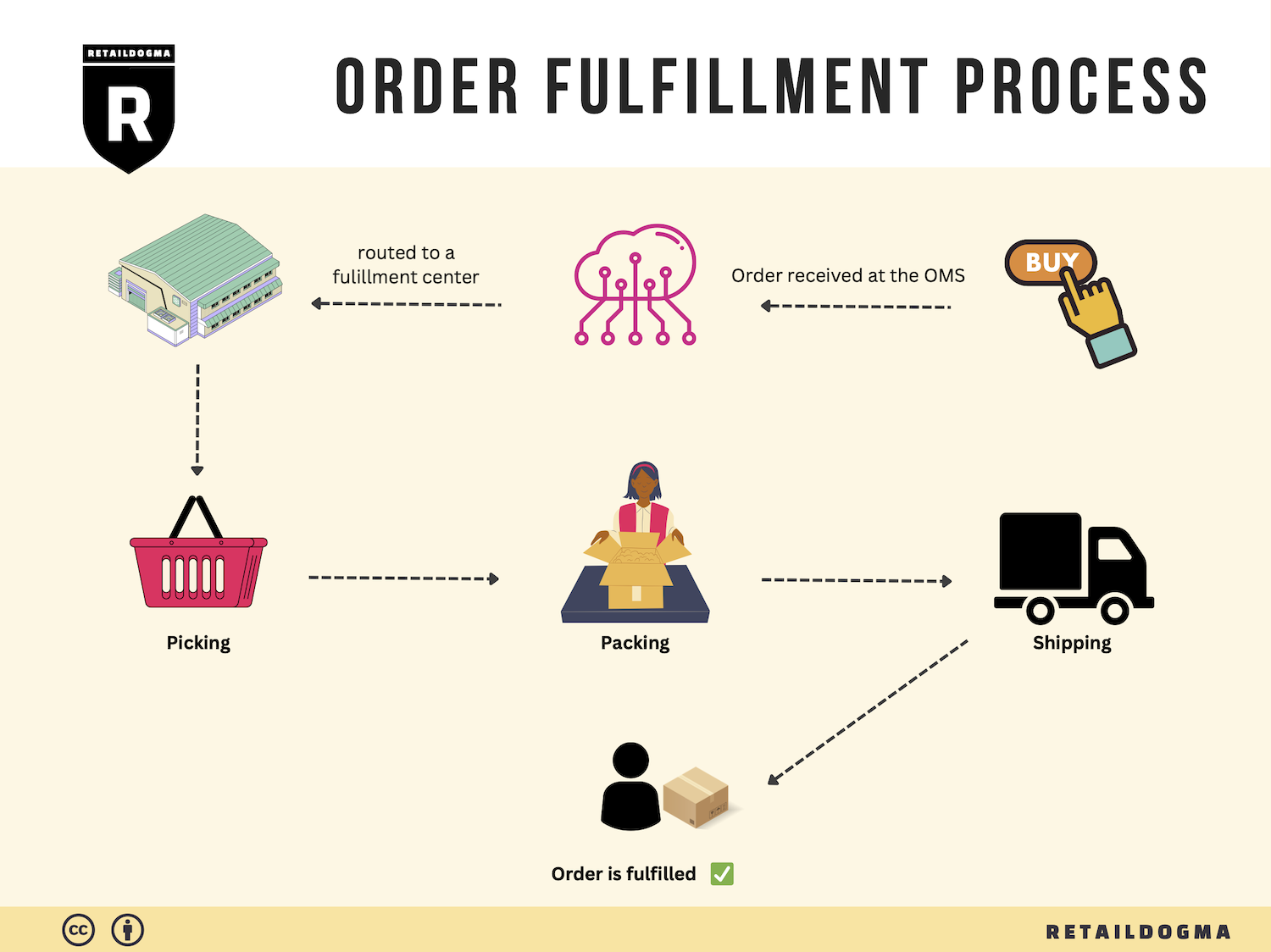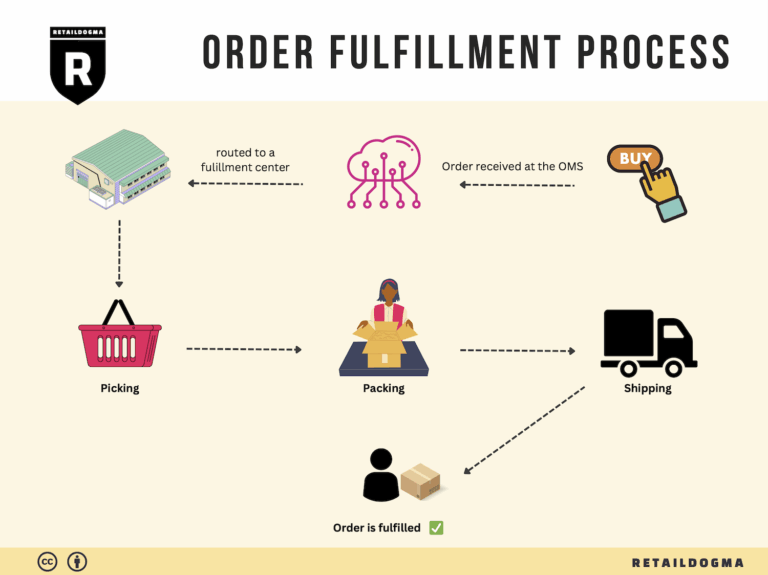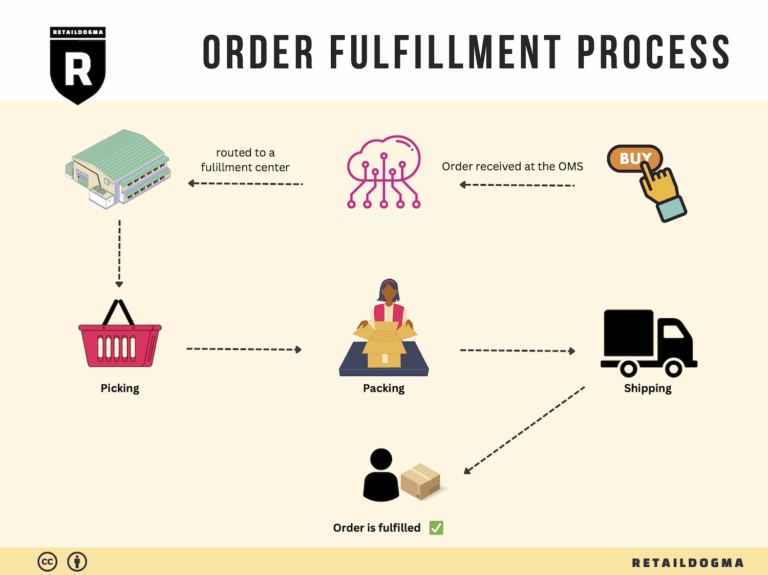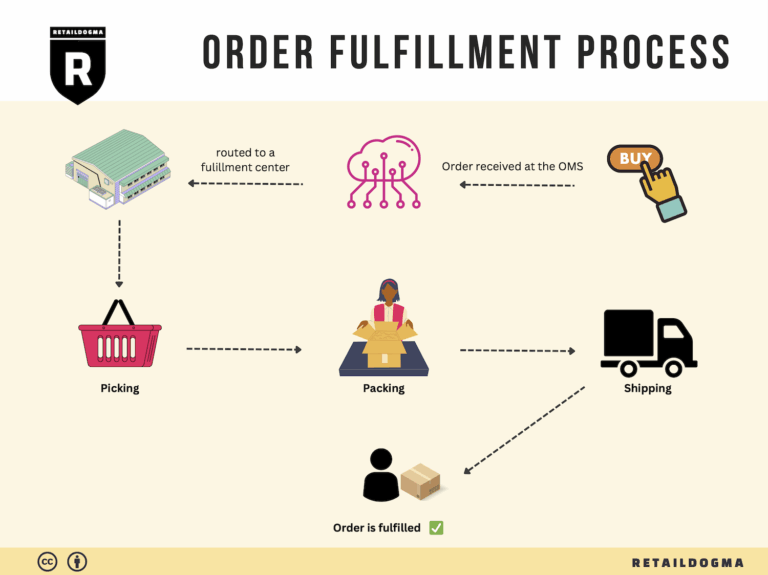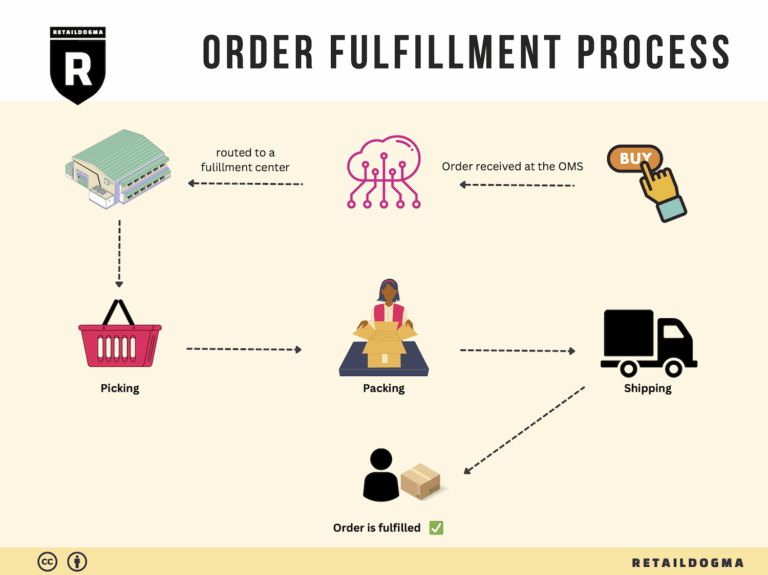How Order Fulfillment Works: A Step-by-Step Guide for Businesses
What is E-commerce Fulfillment? An Introduction for Growing Businesses
Understanding the Challenges of E-commerce Fulfillment
As an e-commerce business owner, one of the most overwhelming aspects of scaling your operations is managing the logistics of packing and shipping orders. The excitement of growing sales can quickly turn into a logistical nightmare if you find yourself buried under a mountain of boxes and packing tape. This is where e-commerce fulfillment comes into play—a crucial process that ensures your products reach your customers efficiently and reliably.
At its core, fulfillment is simply the process of getting a product from your warehouse or fulfillment center to the customer’s doorstep. It encompasses everything from inventory management and order processing to packing, shipping, and even handling returns. For many growing businesses, the need for a streamlined fulfillment strategy becomes increasingly apparent as order volumes rise and customer expectations evolve.
This guide aims to demystify e-commerce fulfillment and provide actionable insights for businesses looking to scale. We will explore various fulfillment models, including third-party logistics (3PL) and Fulfillment by Amazon (FBA), each with its own set of advantages and considerations. Understanding these models is essential for choosing the right approach that aligns with your business goals and customer needs.
Moreover, we will delve into the core services that fulfillment partners offer, such as inventory management, order tracking, and customer service. Knowing what to expect from a fulfillment partner can help you make informed decisions and ensure a seamless experience for your customers.
Choosing the right fulfillment partner is a critical step in your logistics strategy. We will provide a framework for evaluating potential partners, highlighting key factors to consider, such as location, technology integration, scalability, and customer support.

Lastly, pricing is often a top concern for e-commerce businesses. We will break down the costs associated with different fulfillment models, helping you to understand the trade-offs involved and how to budget effectively.
By the end of this guide, our goal is to empower you with the knowledge and tools necessary to make smart decisions about your logistics strategy. With the right fulfillment approach, you can focus on what you do best—growing your business—while ensuring that your customers receive their orders on time, every time.
What You’ll Learn In This Guide
- What is E-commerce Fulfillment? An Introduction for Growing Businesses
- The Order Fulfillment Process: From ‘Buy’ Button to Customer’s Door
- Comparing Fulfillment Models: In-House vs. 3PL vs. Dropshipping
- A Deep Dive into Amazon FBA: Pros, Cons, and Who It’s For
- Core Services Offered by Fulfillment Centers
- How to Choose a Fulfillment Partner: A 6-Point Checklist
- Understanding Fulfillment Pricing: A Breakdown of Common Fees
- Frequently Asked Questions (FAQs) about Fulfillment
- Conclusion: Is Outsourcing Fulfillment the Right Move for Your Business?
- Important Disclaimer
The Order Fulfillment Process: From ‘Buy’ Button to Customer’s Door
1. Receiving Inventory
The first step in the order fulfillment process begins with receiving inventory at the fulfillment center, such as Amazon’s PDX7 warehouse. During this phase, products are delivered from suppliers or manufacturers and need to be checked for accuracy against purchase orders. Each item is logged into the inventory management system, often identified by a Stock Keeping Unit (SKU), which is a unique identifier for each product variant.
Importance: Proper receiving is crucial as it ensures that the inventory is accurate and complete. Inaccuracies at this stage can lead to stock discrepancies, which may ultimately affect order fulfillment and customer satisfaction. Effective inventory management from the start lays the foundation for a smooth operational workflow.
2. Warehouse Storage
Once inventory is received and verified, the next step is to store it efficiently within the warehouse. Products are organized based on various factors such as size, category, and demand frequency. The use of a warehouse management system (WMS) allows for real-time tracking of inventory locations, facilitating easy access and retrieval.
Importance: Strategic storage not only maximizes space utilization but also speeds up the picking process later on. When items are stored logically and systematically, it reduces the time spent searching for products, leading to improved operational efficiency.
3. Order Picking
When a customer places an order, the next crucial step is order picking, where items are retrieved from their storage locations. Pick lists are generated, detailing the specific SKUs and quantities needed for each order. Workers, often equipped with handheld scanners or mobile devices, follow these lists to collect items from the shelves.
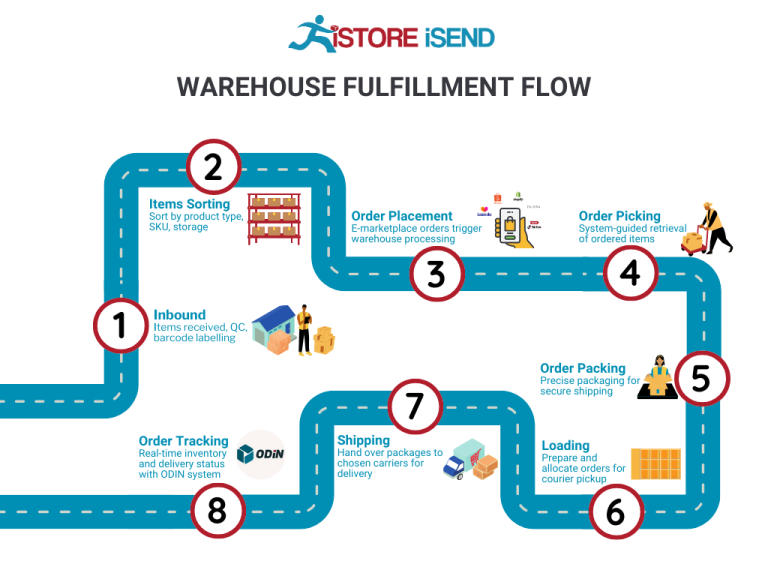
Importance: Effective order picking is essential for maintaining accuracy and speed in order fulfillment. Errors during this step can lead to incorrect shipments, which negatively impact customer experience and increase return rates. Implementing efficient picking methods, such as batch picking or zone picking, can further enhance productivity.
4. Order Packing
After items are picked, they are brought to the packing station where they are prepared for shipment. During this step, items are carefully packed into boxes, and packaging materials are chosen to ensure that products are protected during transit. Shipping labels are printed and affixed to the packages, often including tracking information for customer reference.
Importance: Proper packing is vital to prevent damage during transportation and to ensure that the correct items are sent to customers. Additionally, effective packing can help reduce shipping costs by minimizing wasted space and materials. This step also provides an opportunity for businesses to enhance their brand image through thoughtful packaging design.
5. Shipping & Delivery
The final step in the order fulfillment process is shipping and delivery. Once packages are packed, they are handed over to logistics partners for transport. Depending on the chosen shipping method, orders may be shipped via ground, air, or sea. Tracking systems allow both the business and the customer to monitor the shipment’s progress until it arrives at the customer’s door.
Importance: This step is crucial for customer satisfaction, as timely delivery is often a key factor in the overall shopping experience. Businesses must work closely with reliable carriers and ensure they offer various shipping options to meet customer expectations. The use of technology, such as automated tracking notifications, can enhance communication and improve the customer experience.
In summary, the order fulfillment process is a multifaceted operation that requires careful attention to detail at each stage. By mastering these five steps—receiving inventory, warehouse storage, order picking, order packing, and shipping & delivery—e-commerce businesses can significantly enhance their operational efficiency and customer satisfaction, paving the way for growth and scalability.
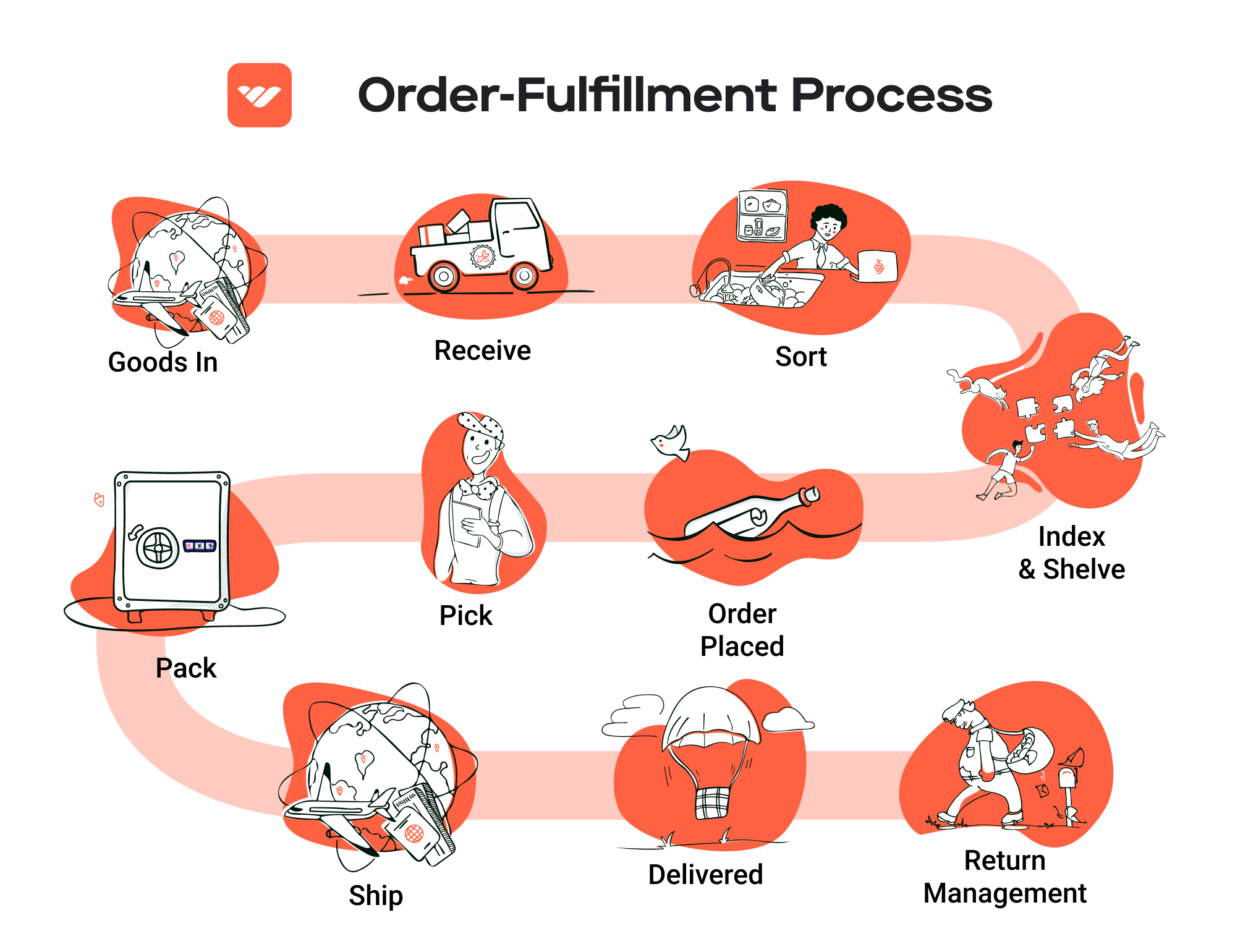
Comparing Fulfillment Models: In-House vs. 3PL vs. Dropshipping
Fulfillment Models Overview
When scaling an e-commerce business, understanding the various fulfillment models is crucial. Each model has its strengths and weaknesses, which can significantly impact operational efficiency, customer satisfaction, and overall business growth. Below is a comparative analysis of the three primary fulfillment models: In-House Fulfillment, Third-Party Logistics (3PL), and Dropshipping.
| Model | Who Handles Inventory | Best For (Business Stage) | Key Advantage | Key Disadvantage |
|---|---|---|---|---|
| In-House Fulfillment | Business itself | Established businesses | Greater control over operations | High overhead and operational costs |
| Third-Party Logistics (3PL) | 3PL provider | Growing businesses | Cost-effective scalability | Less control over inventory |
| Dropshipping | Supplier | Startups and small businesses | Low startup costs and risks | Lower profit margins and shipping times |
In-House Fulfillment
In-house fulfillment is when a business manages its own inventory and shipping processes. This model is ideal for established businesses with sufficient resources and a steady order volume. One of the primary advantages of in-house fulfillment is the control it affords over the entire supply chain. Businesses can maintain quality standards, manage inventory levels closely, and customize packaging and shipping processes to enhance customer experience. Additionally, having inventory on hand allows for quicker order processing, which can lead to improved customer satisfaction.
However, this model comes with significant drawbacks. The initial investment in warehouse space, staffing, and technology can be substantial, leading to high overhead costs. As order volumes increase, the complexity of operations can also grow, necessitating further investment in logistics management systems and fulfillment processes. For many businesses, these costs can be prohibitive, especially if they are still in the growth phase.
Third-Party Logistics (3PL)
Third-party logistics (3PL) involves outsourcing the warehousing and fulfillment process to a specialized service provider. This model is particularly beneficial for growing businesses that wish to scale operations without the burdens of managing logistics themselves. 3PL providers typically offer a range of services, including inventory management, order processing, and shipping, allowing businesses to focus on core activities such as marketing and product development.
The key advantage of using a 3PL is cost-effective scalability. Businesses can leverage the existing infrastructure and expertise of the 3PL provider, which can be especially advantageous during peak seasons when demand spikes. Additionally, 3PLs often have established relationships with shipping carriers, which can lead to reduced shipping rates.
However, the primary disadvantage of this model is the reduced control over inventory and fulfillment processes. Businesses may face challenges in maintaining their brand standards, such as packaging and shipping times, which can affect customer satisfaction. Furthermore, dependency on a third party can lead to potential issues with communication and responsiveness.
Dropshipping
Dropshipping is a fulfillment model where the retailer does not keep goods in stock. Instead, when a customer places an order, the retailer purchases the item from a third-party supplier who ships it directly to the customer. This model is particularly attractive for startups and small businesses due to its low startup costs and minimal risks.
The primary advantage of dropshipping is the ability to offer a wide range of products without the need for inventory investment. Retailers can test new products and markets with relatively low financial commitment. Additionally, dropshipping eliminates the need for warehousing and fulfillment operations, allowing entrepreneurs to focus on marketing and sales.
However, dropshipping also comes with significant challenges. Profit margins can be lower than traditional models due to wholesale pricing and shipping fees. Additionally, retailers often have limited control over inventory levels and shipping times, which can lead to longer delivery periods and potential stockouts. This lack of control can negatively impact customer satisfaction and brand reputation, especially if fulfillment issues arise.
Conclusion
Choosing the right fulfillment model depends on various factors, including business size, stage, and operational capabilities. Each model offers unique advantages and disadvantages that can significantly impact your e-commerce operations. By carefully evaluating your needs and resources, you can select the fulfillment strategy that best aligns with your business goals and customer expectations. Whether you opt for in-house fulfillment, 3PL, or dropshipping, understanding the intricacies of each model will empower you to scale your business efficiently and effectively.
A Deep Dive into Amazon FBA: Pros, Cons, and Who It’s For
Understanding Fulfillment by Amazon (FBA)
Fulfillment by Amazon (FBA) is a service offered by Amazon that allows e-commerce sellers to store their products in Amazon’s fulfillment centers. Amazon then takes care of storage, packaging, shipping, and customer service on behalf of the sellers. This model allows business owners to leverage Amazon’s vast logistics network and customer service infrastructure, freeing them to focus on other aspects of their business, such as product sourcing and marketing.
How FBA Works
-
Setting Up an FBA Account: Sellers need to create an Amazon seller account and enroll in FBA. Once enrolled, they can create product listings and prepare their inventory for shipment to Amazon’s fulfillment centers.
-
Shipping Inventory: Sellers send their products to designated Amazon warehouses, such as PDX7 located in Salem, Oregon. Amazon provides guidelines on how to package and label items to ensure they are ready for storage and sale.
-
Storage: Once the products arrive at the fulfillment center, they are stored until sold. Amazon manages inventory levels, ensuring that items are kept in optimal conditions.
-
Order Fulfillment: When a customer places an order for a product listed as FBA, Amazon handles the entire process—from picking and packing the item to shipping it directly to the customer.
-
Customer Service and Returns: Amazon manages customer service inquiries and handles returns on behalf of the seller, providing a seamless experience for buyers.
-
Payment: After the sale, sellers receive payment through Amazon, minus the FBA fees. This process simplifies financial management for sellers.
Pros of Using FBA
-
Prime Eligibility: Products fulfilled through FBA are eligible for Amazon Prime, giving sellers access to millions of Prime members who expect fast and free shipping. This can significantly boost sales and visibility.
-
Increased Customer Trust: Amazon is a well-established brand known for customer service. By using FBA, sellers can leverage Amazon’s reputation, which can enhance buyer confidence and potentially increase conversion rates.
-
Multi-Channel Fulfillment: FBA is not limited to Amazon sales. Sellers can use FBA to fulfill orders from other channels, such as their own websites or eBay, allowing for a streamlined logistics process across multiple sales platforms.
-
Scalability: FBA allows businesses to scale quickly without the need for significant investment in warehousing and logistics. As sales grow, sellers can send more inventory to Amazon without worrying about storage space.
-
Time Savings: By outsourcing fulfillment to Amazon, sellers can focus on other critical business functions, such as marketing, product development, and customer engagement.
Cons of Using FBA
-
High Fees: FBA comes with various fees, including storage fees, fulfillment fees, and optional service fees. These costs can add up and significantly impact profit margins, especially for low-priced items.
-
Strict Inventory Rules: Amazon has stringent policies regarding inventory management, including guidelines for labeling, packaging, and even inventory age. Sellers must adhere to these rules to avoid penalties or account suspension.
-
Commingling Risks: FBA allows for commingling of inventory, which means that products from different sellers may be stored together. This can lead to issues such as receiving returns that are not from your inventory, which can complicate accounting and customer service.
-
Loss of Control: By outsourcing fulfillment, sellers give up a certain level of control over their inventory and shipping processes. This can lead to challenges in managing brand experience, especially regarding packaging and shipping times.
-
Dependence on Amazon: Relying on FBA means that sellers are dependent on Amazon’s platform and policies. Changes in Amazon’s algorithm, fees, or service can directly impact a seller’s business.
Who is FBA Best For?
Fulfillment by Amazon is particularly well-suited for:
-
Small to Medium-Sized Businesses: Businesses that lack the resources to manage their own logistics can benefit from FBA’s scalability and efficiency.
-
New Sellers: Entrepreneurs entering the e-commerce space can leverage FBA to quickly gain access to Amazon’s vast customer base without needing to establish their own fulfillment network.
-
High-Volume Sellers: Companies with high sales volumes can optimize their shipping and handling processes through FBA, allowing them to focus on growth.
-
Brands Seeking Brand Trust: Sellers looking to enhance their brand credibility can take advantage of Amazon’s reputation for customer service and reliability.
-
Multi-Channel Sellers: Businesses that sell on multiple platforms can streamline their logistics through FBA, making it easier to manage inventory and fulfillment across channels.
In conclusion, while FBA offers numerous advantages that can help sellers scale their operations, it’s essential to weigh these benefits against the potential downsides. Understanding your business model, target market, and operational capabilities will determine if FBA is the right choice for your e-commerce business.
Core Services Offered by Fulfillment Centers
Inventory Management & Warehousing
Inventory management and warehousing form the backbone of any fulfillment center’s operations. This service encompasses the systematic tracking and storage of products within a warehouse, ensuring that inventory levels are maintained according to demand fluctuations.
What It Is: Fulfillment centers utilize sophisticated inventory management systems that monitor stock levels in real-time. These systems help e-commerce businesses keep track of their products, automate reordering processes, and manage stock across multiple sales channels. Warehousing facilities are designed to store products securely and efficiently, often employing advanced racking systems and climate control for sensitive items.
Benefits: For e-commerce businesses, effective inventory management reduces the risk of stockouts and overstock situations, both of which can harm cash flow and customer satisfaction. By leveraging the warehousing capabilities of fulfillment centers, businesses can optimize their supply chain, improve order accuracy, and enhance operational efficiency. This ultimately leads to a more responsive business model that can adapt quickly to market demands.
Pick and Pack Services
Pick and pack services are essential for streamlining the order fulfillment process. This service involves selecting products from the warehouse shelves (picking) and then preparing them for shipment (packing).
What It Is: When an order is placed, fulfillment center staff or automated systems locate the requested items within the warehouse. Once gathered, these items are packed into shipping boxes, often accompanied by packing slips and branded materials. The packing process may include protective materials to ensure items arrive at their destination undamaged.
Benefits: For e-commerce businesses, efficient pick and pack services lead to faster order processing times, which is crucial for customer satisfaction. Quick and accurate fulfillment helps build trust with customers, encouraging repeat purchases. Additionally, by outsourcing this process to a fulfillment center, businesses can focus on core activities such as marketing and product development, rather than the logistical complexities of order fulfillment.
Kitting and Assembly
Kitting and assembly services involve the pre-assembly of products into a single package or kit before they are shipped to customers. This service is particularly beneficial for businesses that sell complementary items or require specific configurations.
What It Is: In this process, fulfillment center staff gather individual components and assemble them into a final product. This can include bundling items together, adding promotional materials, or even configuring products based on customer specifications. Kitting can also involve labeling and packaging for retail environments.
Benefits: For e-commerce businesses, kitting and assembly can significantly enhance the customer experience by providing ready-to-use products. This service can also reduce shipping costs by consolidating items into a single package, which can lead to savings on shipping fees. Moreover, it allows businesses to offer unique product bundles that can differentiate them in a competitive marketplace, driving higher sales and customer loyalty.
Returns Management (Reverse Logistics)
Returns management, or reverse logistics, is a critical service offered by fulfillment centers that handles the return process for products that customers send back. This service ensures that returns are processed efficiently and effectively.
What It Is: Fulfillment centers manage the entire returns process, from receiving returned items to inspecting their condition and restocking them. They often provide businesses with insights into return trends and reasons, which can help in refining product offerings and reducing future returns.
Benefits: For e-commerce businesses, efficient returns management can enhance customer satisfaction and loyalty. A smooth returns process reassures customers that they can shop risk-free, which can lead to increased sales. Additionally, understanding the reasons behind returns can provide valuable feedback for product development and quality assurance. By outsourcing returns management to a fulfillment center, businesses can streamline operations and focus on growth, rather than getting bogged down in logistics challenges.
Conclusion
In summary, fulfillment centers provide a suite of core services essential for e-commerce businesses aiming to scale efficiently. From inventory management and pick and pack services to kitting and returns management, these services not only improve operational efficiency but also enhance customer satisfaction. By leveraging the expertise and resources of fulfillment centers, businesses can focus on their core competencies while ensuring that their logistics operations are in capable hands.
How to Choose a Fulfillment Partner: A 6-Point Checklist
Location & Warehouse Network
Importance:
The geographic location of your fulfillment partner’s warehouses is critical for ensuring timely delivery to your customers. A partner with strategically placed warehouses can help minimize shipping times and costs, enhancing customer satisfaction.
Questions to Ask:
– What is the location of your warehouses, and how do they align with my target market?
– Do you have a network of warehouses that can support regional distribution?
– Can you provide insights into average shipping times from your facilities to various locations?
Technology & Integrations
Importance:
In today’s digital age, technology is a key differentiator in logistics. A fulfillment partner should offer robust technology solutions that integrate seamlessly with your e-commerce platform, enabling real-time inventory management, order tracking, and data analytics.
Questions to Ask:
– What technology platforms do you use for inventory management and order fulfillment?
– Can your system integrate with my existing e-commerce platform (e.g., Shopify, WooCommerce, Amazon)?
– Do you offer real-time tracking for orders, and how can I access this information?
Specializations (e.g., Cold Storage, Oversized Items)
Importance:
Not all fulfillment centers are equipped to handle every type of product. If your business deals with specific items, such as perishable goods or oversized products, you need a partner with the right capabilities to manage those requirements efficiently.
Questions to Ask:
– Do you specialize in handling particular product types, such as cold storage or hazardous materials?
– What facilities and equipment do you have for specialized storage?
– How do you ensure compliance with regulations related to my product category?
Scalability & Capacity
Importance:
As your business grows, your fulfillment needs will evolve. Partnering with a fulfillment center that can scale with your business is essential to accommodate increased order volumes without compromising service quality.
Questions to Ask:
– How do you handle seasonal spikes in order volume?
– What is your capacity for scaling operations as my business grows?
– Can you provide case studies or examples of how you have supported other businesses during their growth phases?
Pricing and Contracts
Importance:
Understanding the pricing structure and contract terms is crucial for maintaining profitability. A transparent pricing model will help you avoid unexpected costs that could erode your margins.
Questions to Ask:
– What is your pricing model (e.g., per order, per item, storage fees)?
– Are there additional costs for services such as returns processing or packaging?
– Can you provide a sample contract, and are there any long-term commitments required?
Customer Support & Reviews
Importance:
Effective customer support can make a significant difference in your operational efficiency. A responsive fulfillment partner can quickly address issues that arise, helping to maintain a smooth flow of operations and high customer satisfaction.
Questions to Ask:
– What level of customer support do you offer (e.g., dedicated account manager, 24/7 support)?
– How do you handle issues such as order discrepancies or inventory shortages?
– Can you provide references or reviews from current or past clients?
Conclusion
Choosing the right fulfillment partner is a critical decision that can significantly impact your e-commerce business’s success. By carefully considering the factors outlined in this checklist and asking the right questions, you can find a partner that aligns with your operational needs, enhances your customer experience, and supports your growth objectives. Remember, a strategic partnership with a 3PL provider can be a game-changer in scaling your logistics and operations effectively.
Understanding Fulfillment Pricing: A Breakdown of Common Fees
Initial Setup Fees
When partnering with an Amazon fulfillment center like PDX7, the initial setup fees are often the first costs to consider. These fees cover the administrative and technical aspects of establishing your account and integrating your inventory with the fulfillment center’s systems.
Typically, initial setup fees can range from a few hundred to several thousand dollars, depending on the complexity of your operations and the level of customization required. Factors influencing this fee include the volume of products you plan to store, the need for special handling, and whether you require additional services like branding or specialized packaging.
To calculate the initial setup fee, fulfillment centers may consider the following:
- Account Configuration: The complexity of setting up your account based on the number of SKUs.
- Integration Requirements: Costs associated with integrating your existing e-commerce platforms with their systems.
- Custom Services: Any special requests for packaging or labeling that deviate from standard offerings.
Receiving Fees
Receiving fees are charged when your products arrive at the fulfillment center. This fee compensates the warehouse for the labor and resources used to check in, inspect, and store your inventory.
Receiving fees are typically calculated per unit or per pallet, depending on how your goods are shipped. For instance, if you send a shipment of 100 units, you might pay a flat fee for receiving those units, which could range from $0.30 to $1.00 per item. If you send pallets, the receiving fee may be based on the number of pallets instead.
Factors that can influence receiving fees include:
- Volume of Inventory: Larger shipments may qualify for lower per-unit rates.
- Condition of Goods: Damaged or improperly packaged items may incur additional inspection fees.
- Special Handling Requirements: If your goods require special handling or storage, expect to pay more.
Storage Fees (per pallet/bin)
Storage fees are an ongoing cost associated with keeping your inventory in the fulfillment center. These fees are usually calculated on a monthly basis and are often charged per pallet or bin.
The standard storage fee can range from $10 to $40 per pallet per month, while bins may incur a lower fee. Storage fees are particularly important to monitor, especially during peak seasons like Q4, when Amazon may implement higher rates due to increased demand.
Key factors that impact storage fees include:
- Inventory Turnover: Slower-moving items may incur higher fees if they occupy space for longer periods.
- Seasonal Adjustments: Expect increased fees during peak seasons when demand and storage space are at a premium.
- Size and Weight of Items: Larger items may occupy more space and incur higher fees than smaller items.
Pick & Pack Fees (per item/order)
Pick and pack fees are incurred each time an order is processed. This fee covers the costs associated with retrieving items from storage, packaging them, and preparing them for shipment.
Typically, pick and pack fees range from $1.00 to $3.00 per item, with some fulfillment centers offering tiered pricing based on order volume. For example, larger orders may benefit from reduced fees.
Consider the following when assessing pick and pack fees:
- Order Complexity: Orders with multiple items may incur higher fees due to the additional labor involved.
- Custom Packaging Requests: If you require branded packaging or unique packing materials, expect to pay more.
- Volume Discounts: Fulfillment centers may offer discounts for businesses with high order volumes, which can significantly reduce costs.
Shipping Fees
Shipping fees are a critical component of fulfillment pricing and can vary widely based on several factors, including the size and weight of the package, the shipping method selected (standard, expedited, etc.), and the destination.
Fulfillment centers like PDX7 typically charge shipping fees based on the following criteria:
- Dimensional Weight: Shipping costs may be calculated using dimensional weight, which considers the size of the package in addition to its actual weight.
- Shipping Zones: Costs vary based on the distance between the fulfillment center and the customer’s location.
- Carrier Rates: Different carriers (UPS, FedEx, USPS) have varying rates, which can affect the overall shipping fees.
Conclusion: Tips for Getting an Accurate Quote
To ensure you get an accurate quote for fulfillment services, consider the following tips:
- Provide Detailed Product Information: Include dimensions, weight, and packaging requirements for all SKUs.
- Estimate Monthly Order Volume: An accurate estimate helps fulfillment centers provide tailored pricing based on your expected needs.
- Ask About Discounts: Inquire about any available discounts for bulk orders or seasonal promotions.
- Review All Fees: Ensure you understand all potential fees, including hidden costs like returns and special handling.
- Request a Comprehensive Breakdown: Always ask for a detailed quote that outlines each fee type to avoid surprises later on.
By understanding these common fulfillment pricing models and diligently gathering information, you can better manage your logistics costs and optimize your e-commerce operations.
Frequently Asked Questions (FAQs) about Fulfillment
1. What is the PDX7 Amazon Fulfillment Center?
The PDX7 is an Amazon Fulfillment Center located at 4775 Depot Ct SE, Salem, Oregon, 97317. It is one of Amazon’s many facilities designed to store, pack, and ship products for sellers using the Fulfillment by Amazon (FBA) service. This center plays a critical role in ensuring fast and efficient delivery to customers in the region.
2. How does the fulfillment process work at PDX7?
When a customer places an order for a product that is stored at PDX7, Amazon’s systems automatically process the order. The product is picked from the shelves, packed, and then shipped to the customer. The entire process is designed to be efficient, typically allowing for same-day shipping in many cases.
3. What’s the difference between a warehouse and a fulfillment center?
While both warehouses and fulfillment centers store goods, their purposes differ significantly. A warehouse primarily focuses on storing products for long-term inventory, whereas a fulfillment center is geared towards processing and shipping orders quickly. Fulfillment centers often have more advanced technology and systems in place to handle order processing, packing, and shipping.
4. What are the benefits of using Amazon FBA at PDX7?
Using Amazon FBA at PDX7 provides several advantages for sellers, including access to Amazon’s vast customer base, streamlined logistics, and the ability to offer Prime shipping. Additionally, Amazon handles customer service and returns, allowing sellers to focus on growing their business rather than managing logistics.
5. How much do fulfillment services cost at PDX7?
Fulfillment costs at Amazon FBA can vary based on several factors, including the size and weight of the products, storage fees, and the number of orders processed. Amazon provides a pricing calculator on their website to help sellers estimate their costs based on their specific product details.
6. What is a 3PL, and how does it relate to Amazon Fulfillment?
A Third-Party Logistics (3PL) provider is a company that offers logistics services to businesses, including warehousing, fulfillment, and distribution. While Amazon FBA acts as a 3PL for sellers using its platform, some sellers may choose to use independent 3PL providers for various reasons, such as cost savings or specialized services.
7. Can I use my own packaging for products stored at PDX7?
When using Amazon FBA, sellers are required to follow Amazon’s packaging guidelines to ensure that products are protected during shipping and handling. This means that while you can design your packaging, it must meet Amazon’s specifications, and you cannot use your own branded packaging without prior approval.
8. How do I manage my inventory at the PDX7 fulfillment center?
Sellers can manage their inventory through the Amazon Seller Central platform. This system allows you to track stock levels, manage replenishment, and analyze sales data. You can also create alerts for low inventory levels to ensure that you restock products in a timely manner.
9. What happens if a product stored at PDX7 is damaged or lost?
Amazon has policies in place to address damaged or lost inventory. If a product is damaged while in Amazon’s possession, they typically reimburse the seller based on the product’s average selling price. For lost items, Amazon will also provide compensation according to their guidelines, ensuring that sellers are protected against inventory discrepancies.
10. How can I optimize my fulfillment process at PDX7?
To optimize your fulfillment process at PDX7, consider the following strategies: regularly analyze your sales data to understand demand trends, maintain optimal inventory levels to avoid stockouts, utilize Amazon’s advertising tools to drive sales, and ensure that your listings are fully optimized for search visibility. Engaging with Amazon’s resources and support can also provide additional insights and strategies for improvement.
Conclusion: Is Outsourcing Fulfillment the Right Move for Your Business?
The Case for Outsourcing Fulfillment
Outsourcing your fulfillment operations can be a game-changer for your e-commerce business, offering a range of benefits that can significantly enhance your growth trajectory. One of the most compelling advantages is time savings. By leveraging the expertise of a fulfillment partner, you free up valuable hours that can be redirected towards strategic initiatives, such as product development and marketing. This allows you to focus on what you do best—growing your brand.
Scalability is another crucial benefit. As your business experiences fluctuations in demand, whether seasonal peaks or unexpected surges, a reliable fulfillment partner can efficiently scale operations to meet these needs. This flexibility ensures that you maintain customer satisfaction without the headaches of managing logistics in-house.
Moreover, partnering with a fulfillment service provides access to specialized expertise and technology. These providers often have established systems in place for inventory management, shipping, and returns—capabilities that can be costly and complex to develop independently. This not only enhances operational efficiency but also allows you to offer competitive shipping options, such as faster delivery times and reduced costs.
However, the key to reaping these benefits lies in choosing the right fulfillment partner. It’s essential to align with a provider that understands your business model and can adapt to your unique requirements. Conducting an audit of your current shipping processes is a strategic step towards identifying whether a fulfillment partner is the right move for your business.
Take Action
Evaluate your current logistics strategy today. Consider how outsourcing could streamline your operations, reduce costs, and ultimately support your business growth. Assess your needs, explore potential partners, and make an informed decision that positions your brand for success in the competitive e-commerce landscape.
Important Disclaimer
⚠️ Important Disclaimer
The information in this guide is for educational purposes. Fulfillment services, pricing, and platform features change frequently. Always conduct your own due diligence and consult with providers directly before making business decisions.
